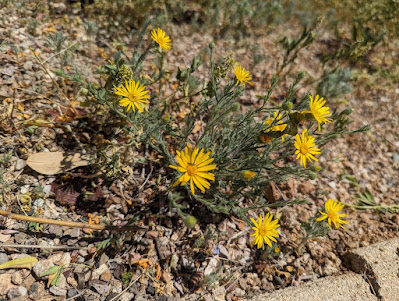Friday, April 28, 2023
How to get rid of toxins in your kitchen
Including pesticides, phthalates, flame retardants, and chemicals used in plastics and other consumer products.
Many of these toxins come from your home, and in particular, your kitchen.
Where they can have a serious effect upon you and your family’s health:
Many common toxins are endocrine disrupting, can cause developmental and reproductive issues, disturb the gut microbiome and have been linked to cancer.
In short, toxic exposure is NOT GOOD.
But there are simple things you can do to reduce your toxic load...
Starting with some simple actions and swaps you can make in your kitchen...
*Statistic obtained from Centers for Disease Control and Prevention (CDC) that found 212 chemicals in blood and urine samples.
Another interesting albeit long read is a study by the Environmental Working Group that found an average of 232 chemicals in the umbilical cord blood of newborns. Read it here.
Reshared from the Zero Waste Cartel
Sunday, April 23, 2023
"Love my rain basin!" campaign
Tucson Water also encourages customers to harvest the rain in their own yards. In fact, they put their money were their mouth is. They offer a rebate of up to $2000 for installing rainwater harvesting systems. Unfortunately, only about 1% of Tucsonans take advantage of this opportunity. Education is a big factor.
Do you have a catchment basin in your yard? Do you enjoy a lush desert oasis nourished by the rain? How about sharing that joy? Let's start a campaign! By sharing photos of your basin with your family and friends, we can reach a broader audience than those in my little social media bubble.
1) Just grab your cell phone and take some lovely pictures of your best rainwater-harvesting catchment basins. (They should be greening up nicely right now.)
We already had gutters and a downspout - so Dan just had to dig the basin and plant the jujube trees. The native grasses help to slow down and sink in the water.
Here's Dan installing our basins...
Friday, April 14, 2023
The life cycle of a Mexican poppy
A while back, I did highlight a few wildflowers in my timely "Good Weeds vs. Bad Weeds" blog.
But this season we've been blessed with some really spectacular wildflowers - nourished by, not one, but two days of SNOW in our desert town!
Thanks to Jared from Spadefoot Nursery for identifying this native Lacy Sleepy Daisy that is growing along our sidewalk.
The native globe mallow is really showing off it's (orange) colors in our jujube basin!
But I'd say the true star of our neighborhood has got to be the Mexican poppy... So I thought I'd do a quick blog about it while it's still around to enjoy!
Please, don't spray Roundup on it...
like the neighbor who sprayed Roundup right next door
to the cute toddler who gathers flowers in the neighborhood. 😒
 |
| Does this look better than a flower? |
Then the birds eat the seeds and spread them through the neighborhood...
Can't wait for next year to see all the pretty poppies. Well... not in that one neighbor's yard... Oh, you know what I mean!
FYI I just learned from Spadefoot Nursery how to tell a Mexican poppy from an Arizona Poppy...
























